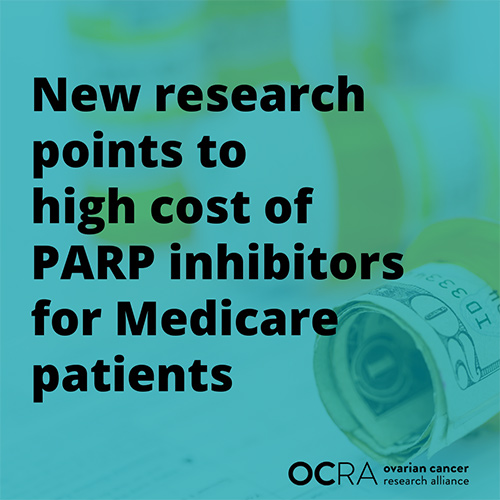
PARP inhibitors have proven to be particularly valuable in improving progression-free survival for patients with certain types of ovarian cancer. But unfortunately, these gains come at a high financial cost to many patients, with a recent study showing that Medicare beneficiaries are the hardest hit.
A team of researchers from The University of Alabama at Birmingham and Columbia University examined how much people living with ovarian cancer are paying for PARP inhibitors, then looked at how costs differ depending on insurance type. The researchers found that though insurance covers a large part of the costs in all cases, PARP inhibitors still take a financial toll on patients, accounting for most of their out-of-pocket drug spending. The study’s findings, which were published in Gynecologic Oncology, also point to a significantly higher cost burden for people insured through Medicare.
For the purposes of their study, the researchers focused on ovarian cancer patients who were prescribed niraparib, olaparib or rucaparib. They identified patients who fit these criteria via the following databases: MarketScan for the commercially insured group, and Surveillance, Epidemiology, and End Results (SEER)-Medicare for the Medicare group. The researchers looked at data on a total of 590 commercially insured patients and 213 Medicare beneficiaries who were prescribed PARP inhibitors for a median of 112 days. This information was used to estimate drug costs for a 30-day supply.
After analyzing the data, the researchers calculated that the median out-of-pocket cost of PARP inhibitors for commercially insured beneficiaries was $44, with high-deductible health plans not resulting in higher out-of-pocket costs. PARP inhibitors accounted for a median 90.8% of total out-of-pocket drug spending for this group.
In contrast with the commercially insured patients, Medicare beneficiaries have much higher out-of-pocket costs associated with PARP inhibitors. According to the researchers’ calculations, the median out-of-pocket cost of PARP inhibitors for patients insured through Medicare was $370 — more than eight times higher than the out-of-pocket cost for the commercially insured group. That means that ovarian cancer patients insured through Medicare are spending more than $4400 a year out-of-pocket on drugs that play a crucial role in their treatment. In fact, nearly all of Medicare patients’ out-of-pocket drug spending comes from purchasing PARP inhibitors.
Through our advocacy work, OCRA will continue to shine a light on inequities within our healthcare systems. We expect there to be significant efforts in this Congress and this Administration to address drug pricing and reimbursement, and OCRA will work to ensure that the ovarian cancer community is well represented.


